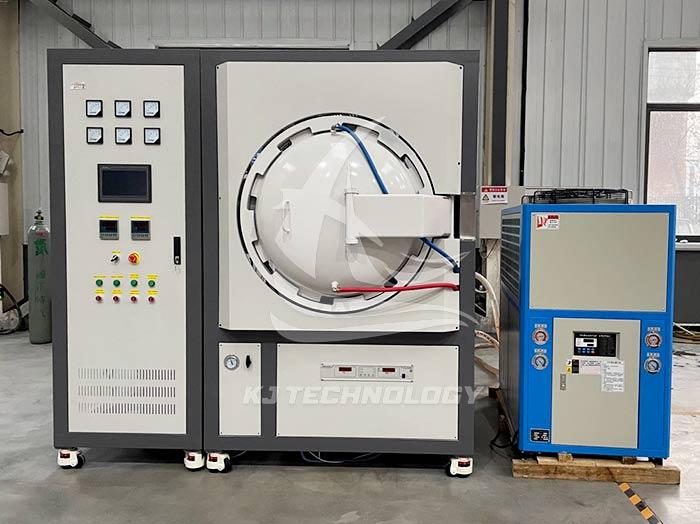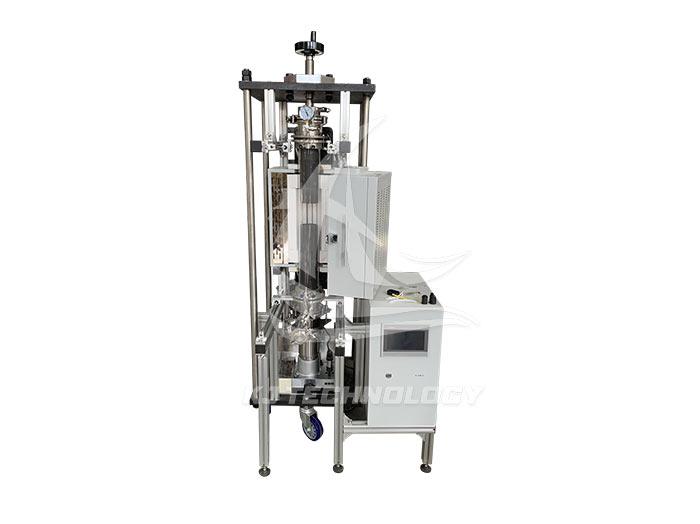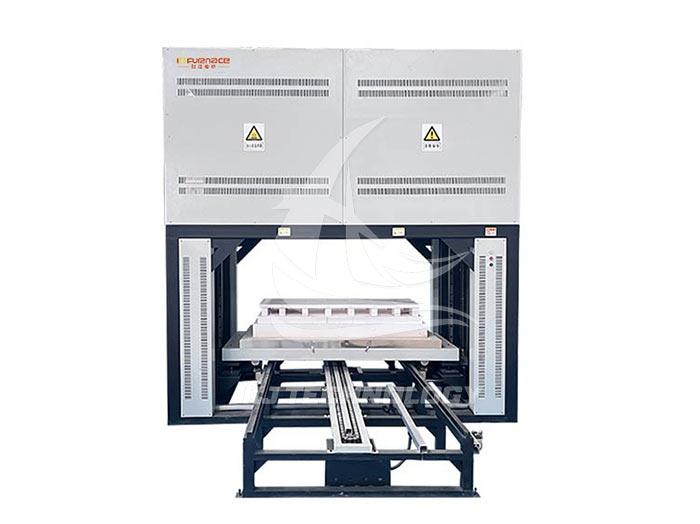Can the lab graphite furnace be used for brazing experiments?
 10-23-2025 Author: KJ technology
10-23-2025 Author: KJ technology
The laboratory graphite vacuum furnace can be fully used for brazing experiments. Its high temperature, vacuum or controllable atmosphere environment, as well as excellent material adaptability, make it an ideal equipment for brazing processes. The following is a specific analysis:
1. Core advantages of laboratory graphite vacuum furnace for brazing
Vacuum environment eliminates oxidation
During the brazing process, the metal is prone to react with oxygen at high temperatures to form an oxide film, which hinders the wetting of the brazing material. The laboratory graphite vacuum furnace can operate under high vacuum (≤ 10 ⁻ ³ Pa) or inert gas (such as argon, nitrogen) protection, completely avoiding oxidation and ensuring sufficient bonding between the brazing material and the base material.
High temperature capability meets the melting point requirements of brazing materials
The melting point range of commonly used brazing materials (such as silver based, copper based, nickel based) is 450 ℃~1200 ℃, while the highest temperature of laboratory graphite vacuum furnaces can usually reach 1600 ℃~2000 ℃, or even higher (such as high-end equipment at 2300 ℃), fully covering the brazing temperature requirements.
Uniform heating and precise temperature control
Graphite heating elements combined with advanced temperature control systems (such as PID control) can achieve temperature uniformity within ± 5 ℃ in the furnace, avoiding local overheating that may cause deformation of the base material or loss of brazing material, and improving brazing quality.
Wide adaptability of materials
Graphite furnace has no pollution to base materials such as metals, ceramics, and composite materials, and can adapt to workpieces of different shapes (such as thin plates, pipes, and irregular parts) to meet diverse brazing needs.
2. Specific application scenarios of laboratory graphite vacuum furnace brazing
Aerospace field
Titanium alloy brazing: brazing TC4 titanium alloy under vacuum, used for aircraft engine blades or structural components to avoid brittleness caused by oxidation.
High temperature alloy brazing: brazing nickel based high-temperature alloys (such as Inconel 718) to prepare gas turbine hot end components.
Electronic packaging and micro connections
Vacuum brazing chips: Soldering power devices (such as IGBT modules) in an oxygen free environment to prevent oxidation and increase in contact resistance.
MEMS device packaging: brazing metal ceramic or metal glass structures in microelectromechanical systems (MEMS) to ensure airtightness.
automotive industry
Stainless steel brazing: Brazing stainless steel components of automotive exhaust systems to reduce the formation of oxide scale and improve corrosion resistance.
Aluminum alloy brazing: brazing aluminum alloy heat sinks in an inert atmosphere to avoid hydrogen porosity defects.
Jewelry and Crafts
Precious metal brazing: brazing platinum, palladium and other precious metal jewelry under vacuum to avoid oxidation loss and maintain surface gloss.
3. Example of experimental steps for brazing graphite vacuum furnace in laboratory
Workpiece pre-processing
Clean the oil stains and oxide film on the surface of the base material (such as acid washing, sandblasting).
Coating flux (such as fluoride flux) or directly using flux free brazing material.
Furnace loading and parameter setting
Assemble the workpiece and solder sheet (or paste solder) into a graphite fixture.
Set the heating curve:
Room temperature → 500 ℃: Slowly raise the temperature (e.g. 5 ℃/min) to remove adsorbed gases.
500 ℃ → brazing temperature: rapidly raise the temperature to above the melting point of the brazing material (such as silver based brazing material at 850 ℃).
Insulation time: Maintain for 5-30 minutes according to the thickness of the workpiece to ensure sufficient flow of the brazing material.
Cooling stage: Cooling along with the furnace or controlling the cooling rate to avoid thermal stress cracking.
Vacuum degree control
Vacuumize to ≤ 10 ⁻ ³ Pa (or fill with high-purity argon gas to -0.02 MPa), and select the atmosphere according to the type of brazing material.
post-processing
Remove residual flux (such as water washing, ultrasonic cleaning).
Check the quality of the brazed joint (such as X-ray inspection, shear strength testing).
4. Precautions for brazing graphite vacuum furnace in laboratory
Solder selection
Prioritize the use of vacuum specific brazing materials (such as Ag Cu Ti brazing materials containing active elements) and avoid the use of volatile components (such as zinc based brazing materials).
Fixture Design
Use graphite or ceramic fixtures to avoid metal fixtures reacting with the workpiece at high temperatures.
Ensure fixture rigidity to prevent workpiece displacement during brazing process.
Temperature uniformity optimization
For large-sized workpieces, zone temperature control or rotating workpiece tables are used to reduce temperature gradients.
safe operation
Wear heat-resistant gloves and goggles to avoid burns from high temperatures.
Regularly check the oil level and sealing of the vacuum pump to prevent air leakage.








